Interview with Patrick Steppan and Odessa Sagli
How did you become passionate about ecological concerns?
Patrick: As a kid, I had an appreciation for nature through gardening with my Mom, and also through camping as a Boy Scout. Later I became more aware of climate change and also its ethical and political dimensions. Lately I’ve been fascinated with the philosophical aspects of ecology and the Anthropocene, and am motivated by the potential for collective action in the US.
The words of authors and thinkers like Henry David Thoreau, Annie Dillard, Aldo Leopold, Anna Tsing, Amitav Ghosh, and Bruno Latour have also had a significant role in developing how I think about our relationship with the environment.
Odessa: I think the household I grew up in had a huge impact on my views. I wasn’t really allowed to watch TV as a child, so all my time was spent playing outside in the backyard. We had a compost in our backyard until it became a city-wide thing. We would even wash and reuse things like our plastic bags. So the importance of the environment has always been there, at least a little bit and in small ways. As I’ve gotten older and learned more about how alarming and urgent climate change is, I’ve become more motivated to take direct action and address the problems.
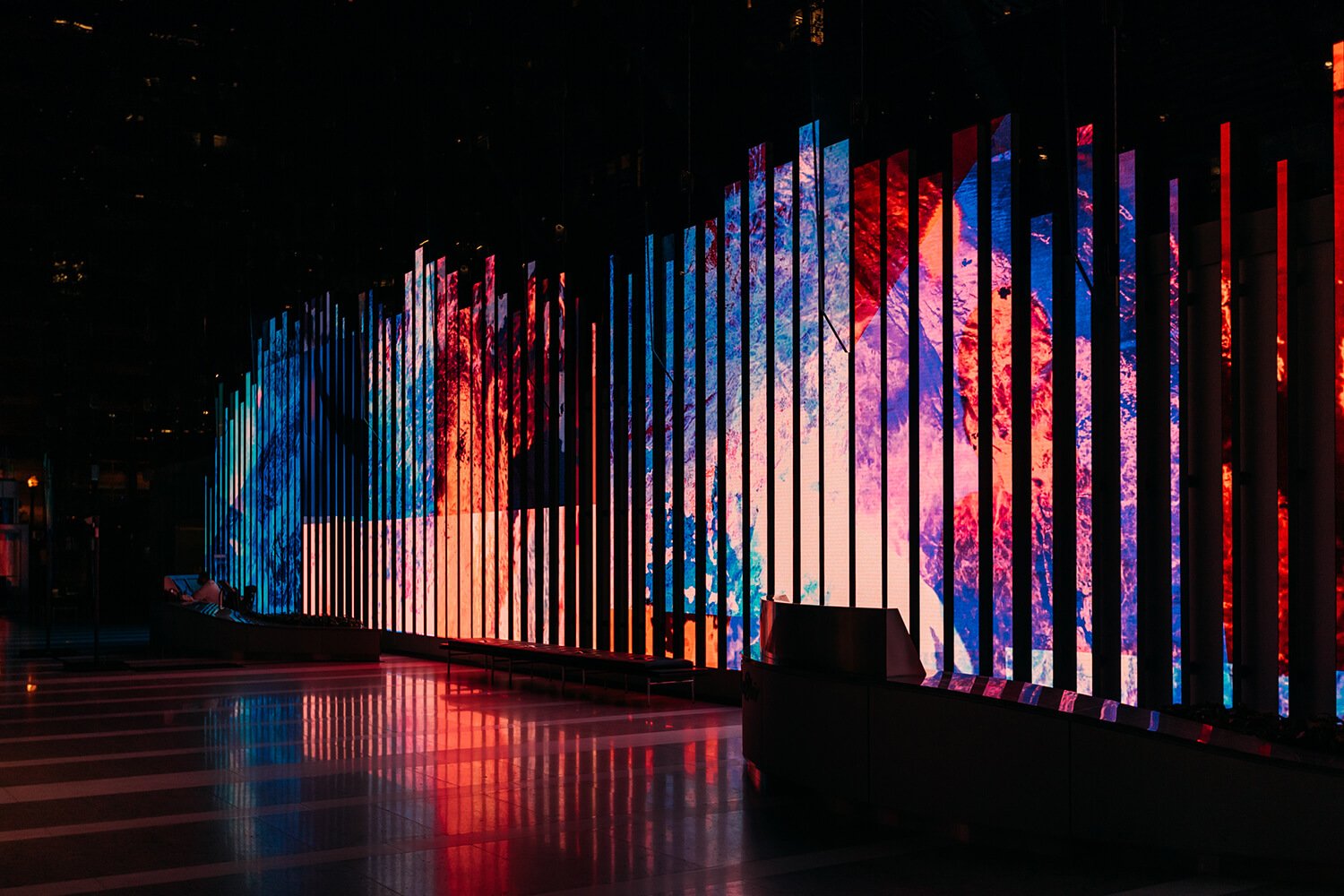
Can you talk about your collaborative process with each other? What were your individual roles? Were there any particular challenges or conflicts?
Odessa: Having worked creatively with Patrick before this project, we had already developed a trusting type of relationship where we could comfortably share our thoughts, ideas, and most importantly criticisms with each other openly.
We took on an experiment-driven, collage-like approach to making the video. We would work to make many small visual experiments and try to grow the ones with the most potential, let them change and evolve and develop with time. Our collaborative process was very back and forth between the two of us. We would work individually and then come together and share. When we were first working together on this project we were both at Knox so the sharing was direct, but after lockdown we couldn’t see each other in person, which changed the dynamic of how we worked together. It took some adjustment and the distance was honestly difficult for me. I get a lot out of being around the people I’m working with so I struggled to feel connected at times.
There was also a huge learning curve as I had never used Adobe AfterEffects before or attempted a digital piece. My past experience in digital art was stop motion animation which involves editing and constructing photographs, so the leap to video editing was definitely a challenge.
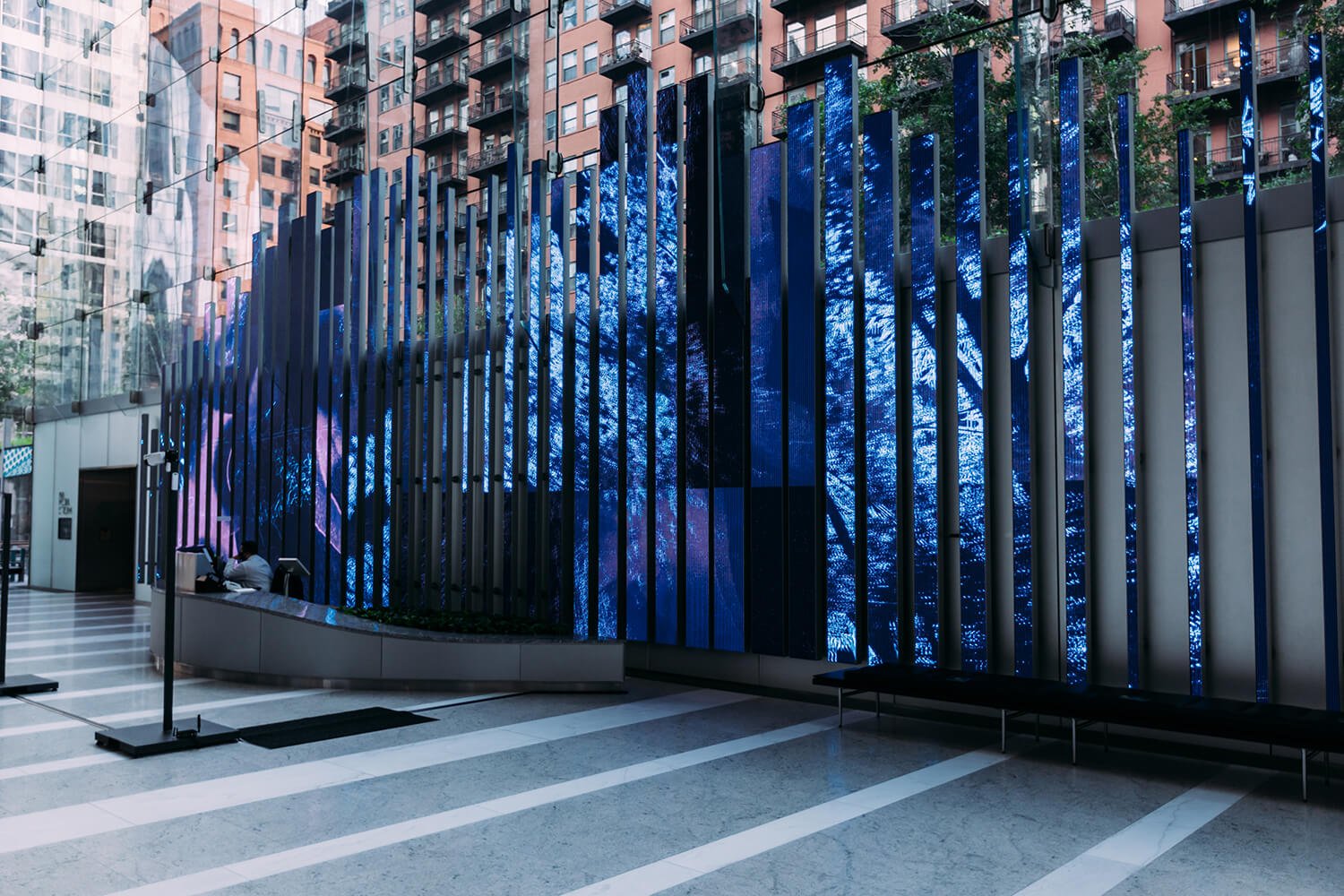
Patrick: Our process was a kind of iterative elaboration and articulation on particular formal, theoretical, and environmental concerns that we wanted to address. For instance, we were both interested in issues of temporal and spatial scale, which lent itself well to exploring something like climate change.
Both of us worked on composition, and as Odessa mentioned she sourced the natural material in the work, like recordings of trees, water, fabrics, and dance. I produced other videos that were used more sparingly, like simulated murmurations of small geometric forms, and renderings of terrain where natural disaster has had a significant impact.
I found that working collaboratively on a public art work of this scale came with significant limitations, which restrained and directed the potential of the project from the start. For instance, we had to communicate artistic decisions more intimately than we would’ve with non-collaborators, and had to consider how the piece would function in a public space.
After recognizing those limitations though, the only issues I had were technical ones relating to production. Working at this scale of video comes with the cost of a slower feedback loop, and it was often hard to gauge how the conditions of the site would affect the work.
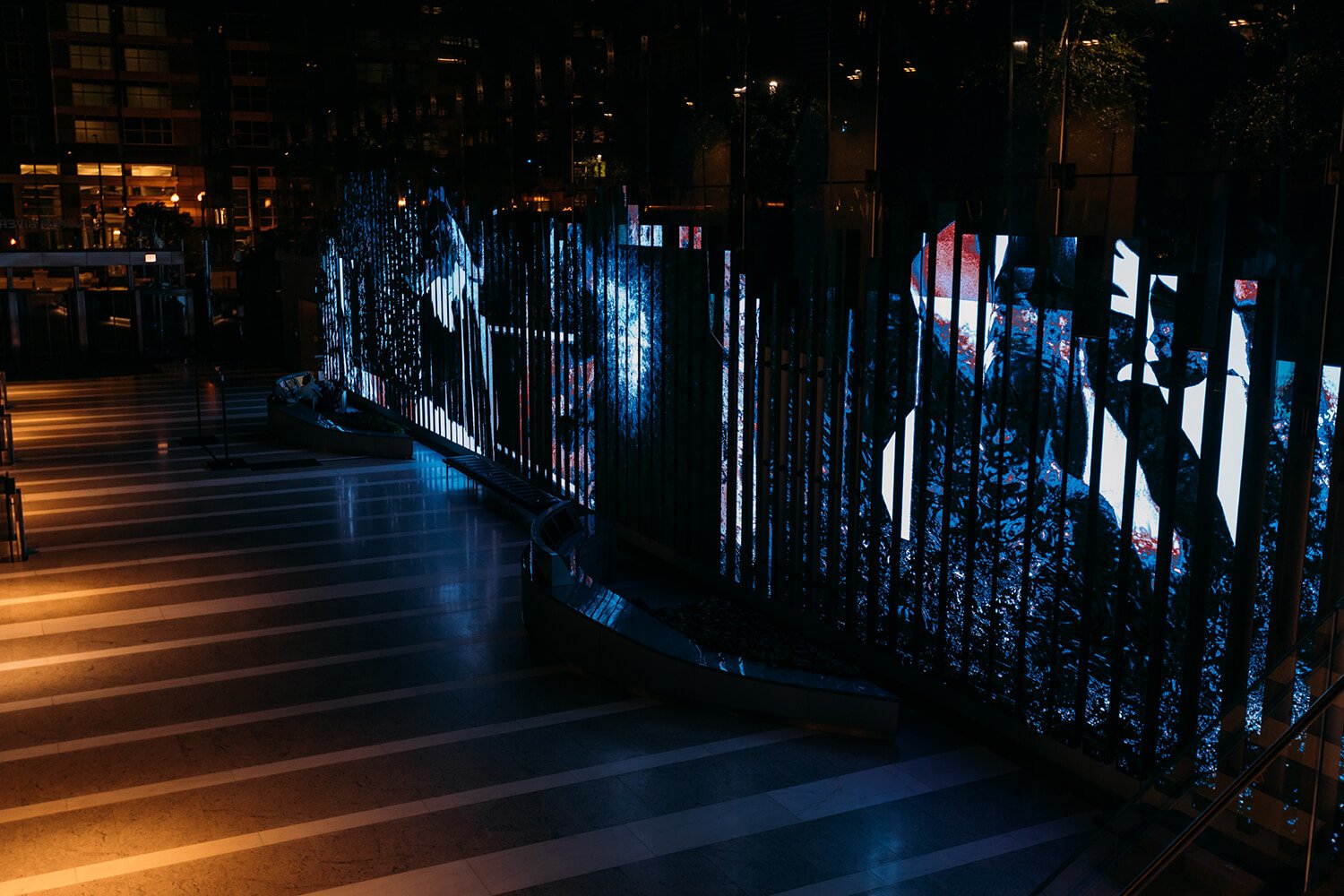
What classes did you take at school that prepared you for this project? What advice would you give to other students who want to pursue this type of artistic endeavor?
Odessa: 2D Design I & II courses helped prepare me for this project the most. I learned how to use Adobe programs such as InDesign and Photoshop and work graphically. I learned how to construct visually interesting compositions with simple shapes. More generally though, in Drawing I, Painting I and II we worked with line, color, tone and shape to create motion, form and space.
We had a huge amount of creative freedom with this project in both the concept and visual components. So my experience being an ASSET scholar and my experience in Open Studio, where I was pushed to start developing my own ideas, passions and work, gave me the tools to work with that which inspires me.
Some advice I would give to other students pursuing a project like this, would be to build and stretch skills that one has and to not be afraid of trying something new.
Patrick: The most relevant courses would be: Printmaking as Social Action where I had time to consider and discuss the efficacy of activism through art. Challenges of Sustainability which introduced me to the work of Annie Dillard. Contemporary American and European Art where I first saw the work of Nam June Paik. And my design classes where I had time and the right amount of direction to explore my own visual sensibilities.
If other students pursue a project like this, then I would suggest a few things. First, find a medium and production method that allows all collaborators to contribute their artistic intent. Second, structure your time well and resolve technical issues that might disrupt that schedule. And lastly, communicate frequently, consistently, and honestly with your collaborators.
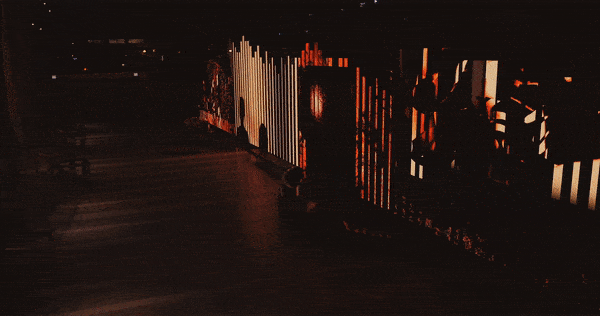
What are each of your plans for the future?
Odessa: In the immediate future, I am going to travel and work on farms for a few years in the United States and potentially elsewhere. I want to see more of the world and experience a different type of work than what I’ve been exposed to thus far. I plan to continue thinking, drawing and writing down ideas, as I navigate working in different places. Even though this experience is not directly related to my ambitions of becoming a professional artist, I view it as a way to both explore my interest in sustainable living and expand my worldview through new experiences in ways that I hope will be reflected in my art. I am continually inspired by patterns I see in the natural world. I plan on using farming as a way to intimately get to know the food we eat and how it grows, and I am interested in finding a community that focuses on sustainable food/farming and creative practices. I plan to apply to art residencies in 2022 and I am hopeful that this reconnection with the natural world will help prepare me for that challenge.
Patrick: It is difficult to say. There are just so many contingencies, so it’s hard for me to make plans when I know there’s so much that could disrupt them.
That said, I think my next step is to work for a few years in creative technology/design here in Chicago, while I develop my personal art practice. Afterwards I’d think about pursuing a masters in media or software studies and finding new creative communities elsewhere.
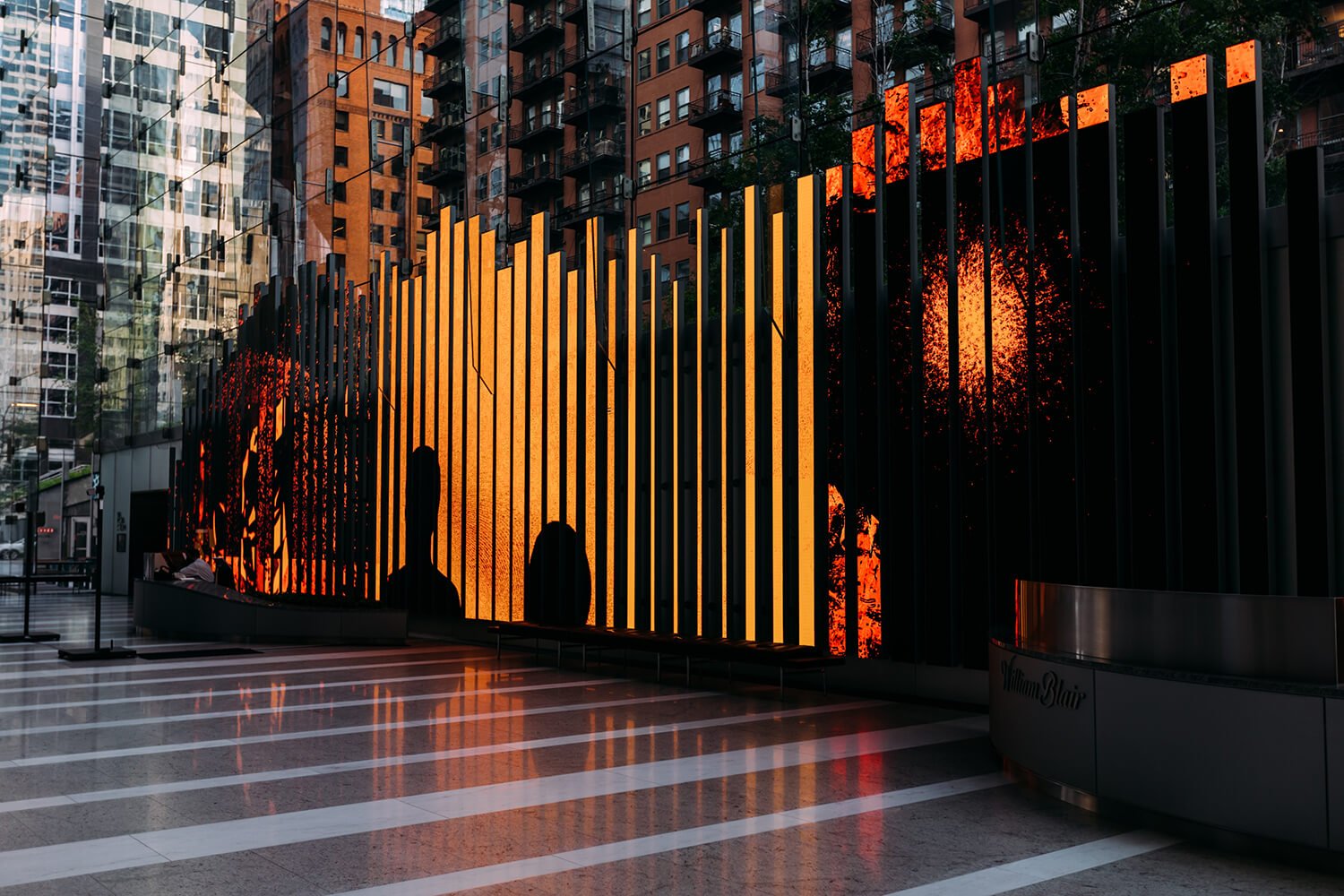
Patrick Steppan is a Chicago-based artist, programmer, and visual designer. His work involves computationally processed and mediated images and printed books. In his work, Steppan explores how digital interfaces affect a distorted sense of time and significance. He earned his BA in computer science in 2020 and is a 2018 alum of the School for Poetic Computation in NYC.
Odessa Sagli is from Portland, Oregon. She earned a BA in studio art with a design minor at Knox College. Her work revolves around shifting environments, movement and time. Using charcoal for its directness and visceral nature, she works with images of shifting black and white masses to elicit forms with lines and tones.